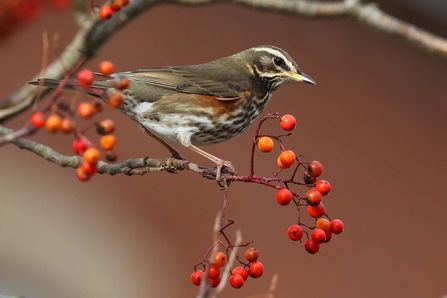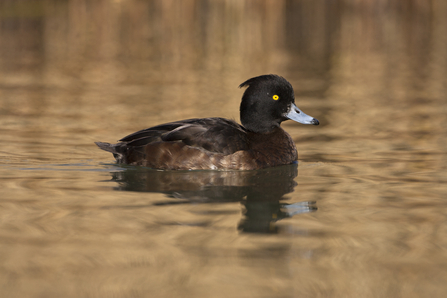You’ve reported seeing a variety of bird this month, so we’ll start with a sighting of a treecreeper in the High Peak, which gets its name from its habit of climbing up tree trunks, often spiraling around them, before flying to the bottom of another tree once they reach the top. Over near Chesterfield a female blackcap was spotted, this species is named after the head feathers of the males whereas have cap of red feathers. Moving to South Derbyshire recordings including two sightings of red kites, who mainly eat worms and carrion and sometimes small mammals when they can. Also spotted was of a flock of redwings, named after the red feathers under their wings these small thrushes are mostly winter visitors having come here from Iceland and Scandinavia, though a very small proportion do stay in the UK to breed.
Sightings Blog - 2022 Blog #4

Redwing, Margaret Holland
A few waterbird species were seen in South Derbyshire including a group of grey herons, who nest in colonies called Heronries where the females lay three of four eggs per clutch. Tufted ducks were also spotted, named for their distinctive hairdo which is present on both the black and white males and brown females who lay eight - eleven eggs per clutch. A little egret was recorded, which also sports long head feathers during the breeding season, more commonly seen along the coast these bird are expanding their range possibly due to higher temperatures caused by climate change.

(C) Guy Edwardes/ 2020VISION
As we advance into spring we are looking forward to reading about your wildlife sightings across Derbyshire. To submit your own sighting and be featured in a future blog go to www.derbyshirewildlifetrust.org.uk/wildlife/record-sighting.
Thank you to Linda Goulden, Janine Self, Gillian Margaret Day, Gill Dyson, Claire Dawes, Richard Clowes, Andy Norman and Henry Richards for submitting their wildlife sightings.
